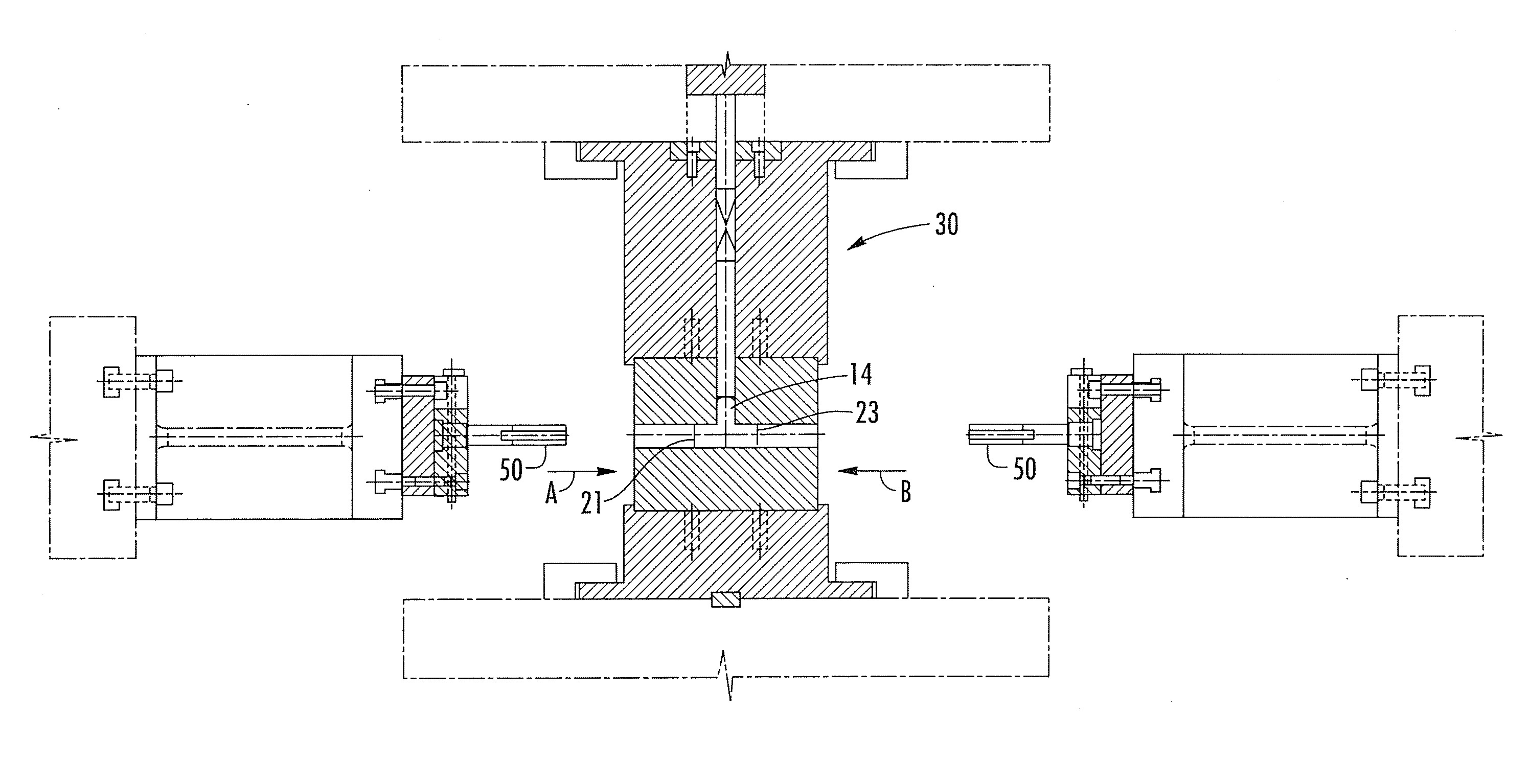T-fitting manufacturing method and tool
- Summary
- Abstract
- Description
- Claims
- Application Information
AI Technical Summary
Benefits of technology
Problems solved by technology
Method used
Image
Examples
Embodiment Construction
Referring initially to FIG. 1, there is shown a conventional T-fitting 10 in which a copper tube is formed by compressing under water at high pressure (about 10,000 psi) utilizing cylindrical punch noses compressing a straight section of cylindrical copper pipe in opposite directions indicated by arrows A and B in FIGS. 1 and 2. The result is a domed cylindrical orthogonal T-extension 14 (FIG. 12) to the otherwise cylindrical pipe 12. The enclosed end of domed extension 14 is cut in a second step, after which each of the three open ends is sized in a sizing guide to form the finished product. The cylindrical punches are inserted in the pipe in opposite directions as indicated by arrows A and B, however, resulting in a buildup of copper in the area indicated by arrow C in FIG. 1. This extends substantially the width of the of the diameter of the T-section 14. This buildup of copper material provides no additional strength or functional value to the T-fitting 10 and represents a waste...
PUM
| Property | Measurement | Unit |
|---|---|---|
| Angle | aaaaa | aaaaa |
| Angle | aaaaa | aaaaa |
| Angle | aaaaa | aaaaa |
Abstract
Description
Claims
Application Information
 Login to View More
Login to View More - R&D
- Intellectual Property
- Life Sciences
- Materials
- Tech Scout
- Unparalleled Data Quality
- Higher Quality Content
- 60% Fewer Hallucinations
Browse by: Latest US Patents, China's latest patents, Technical Efficacy Thesaurus, Application Domain, Technology Topic, Popular Technical Reports.
© 2025 PatSnap. All rights reserved.Legal|Privacy policy|Modern Slavery Act Transparency Statement|Sitemap|About US| Contact US: help@patsnap.com



